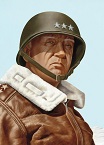el cid again
Posts: 16922
Joined: 10/10/2005
Status: offline

|
RHS House Rules [Level II]
Primary House Rule: A player should never do anything which, in his view, would not have been done by a historical commander in the WW2 era.
Active Russians: In scenarios with Active Russians (121, 124, 125 & 129) the Allied player may not attack Japanese positions or units (except by mistake or in reasonable and proportionate reprisal) before the expiration of the non-aggression pact with Japan (1 July 1945). It is easy for either side, due to a settings error, to run an air raid – and a reprisal in kind is fair play. It is also permitted to overfly enemy territory for recon or search missions - at the risk of being shot down by fighters or flak. But a true invasion of Japanese territory, or a major, organized attack on Japanese bases before the treaty expires is forfeiture of the game. The Russians gave proper, 90 day notice they would not renew the treaty. It is assumed they honor the treaty as well as give such official notice in every game. RHS has active Russians (in odd numbered scenarios) to give the Allies several benefits: a) they can control deployment of units; b) they can control upgrading of units; c) they can supply remote locations and recover resources or oil from them; d) they can run recon and search to learn of enemy invasion deployments; e) they can respond to an enemy invasion, or pre-empt one, instead of waiting helplessly as the enemy invasion unfolds until the computer concludes enough hexes have been occupied to “release” Russian units to player control (this is a major problem). These boons may not be abused to permit operations which Stalin would never have authorized, because he was dead set against a two front war.
Whitehorse House Rule: In strictly historical scenarios 121,122, 123 & 124, the Allies may not repair the oil wells and refinery at Whitehorse, Yukon until May, 1944. These model the CANOL pipeline and a refinery moved from Texas and it took until May, 1944 to get them fully operational. In JES Scenarios 125 & 129, players have options to repair the oilfields and oil refinery at Kenai, Alaska and/or at Norman Wells, Northwest Territories from May, 1942. This is probably not feasible in Winter or Spring Breakup (how could you move enough supplies to even begin?) - but these are known options not taken IRL. Both are more practical than the CANOL project, which barely worked at all - thick NWT oil in a small pipe in a cold climate was not easy to keep moving. Historical scenarios (121-124 & 126) have the suffix CANOL after Whitehorse and Whitehorse has a base victory point value of 3 (= important minor location for any reason). In these scenarios Norman Wells may not expand oil or refinery production (forcing the historical choices). JES scenarios (125 & 125) have the suffix AKOIL after Kenai and Kenai has a base victory point value of 3. In these scenarios Norman Wells MAY expand oil and/or refinery production (reflecting greater Allied priority in the greater threat context present) but hauling in the supplies required will be very difficult. Kenai is much easier to supply but also much more at risk to capture or damage by the enemy (which is why it was not developed during the war).
Whittier Tunnel: The RR tunnel to Whittier Alaska is considered completed if you repair the port (it starts at zero). Because there is no way to have the rail line incomplete and still run its route (from Anchorage to Seward) we simply have the Whittier hex not function as a port unless you fix it. Fixing it completes the almost completed tunnel to it. There is an engineer unit in the hex to do that.
Copper Ricer Railroad: The Copper River RR is present in ALL versions of the pwhex files. It runs from Cordova, Alaska to Kennicot, a wholly undeveloped dot location. This RR was abandoned in 1938 when the copper mines were closed due to low copper prices. Other copper mines were reopened in WWII (for example in Michigan and in Montana). This copper mine can be reopened IF an Allied player moves engineer to the dot location along with lots of supplies AND IF repair of resources is turned ON – in which case the RR will function. The Million Dollar Bridge remained in-tact until the 1964 earthquake. This location and RR may be ignored by any player who does not want to use them – and NOTHING will happen in that case – since there will be no production unless the damaged resources are repaired. Tailings at this mine are of economic value, but it is cost prohibitive to fly them out (even though an airfield has been built) and the track has now been turned into road.
Railroad Units: In ODD numbered scenarios, railroad units must move along rail lines. All such units have the word “train” or “RR” in the unit name. If such a unit retreats off a railroad, it may only move back to a rail line by the shortest possible route, even if that forces movement into an enemy occupied or controlled hex. Railroad units do not exist in “simplified RHS” (even numbered scenarios).
Amsterdam Island: Location 497, Hex 6,173, near the “West” edge of the map, is functionally the Axis Entry Point. Its game function is to permit Axis raiders and submarines from Europe to enter the map near where they historically entered the Indian Ocean. This island is strictly off limits to the Allies. It is worth zero victory points to the Allies. It is forbidden to invade this island. This is because Axis shipping did not enter at one fixed point at all and because AE has no mechanism to permit entry by Axis vessels using an Entry Zone. Allied naval units are not permitted within three hexes of this hex. Allied aircraft may not recon this island nor search hexes adjacent to this island. The “Axis” (Japanese) Player may not build facilities on Amsterdam, nor land troops. This unique “base” serves ONLY as an entry point for Axis naval unit reinforcements.
Axis Off Map Entry Track: Axis naval units entering at Amsterdam Island may now move DUE WEST into the Axis Off Map Entry Track. Allied naval units may never enter this track. It allows movement of Axis units to simulate a course SW from the Cape of Good Hope, past the Crozet Islands, coming up on the Southern map edge near the one ice shelf feature present on (all, stock, extended and RHS) maps. The little green cross at the end of this track is the Alternate Axis Entry Point. No Allied ships or searches are allowed within three hexes of this point. It permits Axis vessels to enter the map over a range of hexes and is a compromise intended not to limit the Allies much at all but to give the entering vessels some chance of survival (instead of automatic interception).
Ghost Submarines: Both sides get a small number of “ghost submarines” (both at start and as reinforcements). These subs are ONLY present in Full RHS Scenarios (those with odd numbers). They are normally set to computer control and left to do whatever the computer wants. If damaged or out of fuel, however, players need to return them to a base, fix/arm them, and then send them to any area they might run into the enemy – and return them to computer control. Ghosts are NOT possible to identify by the enemy. An owner, however, can see they have long range, too many shots, and no guns. Their torpedoes do NO damage and miss 99% of the time. They cause ASW escorts and aircraft to waste shots – but gain experience in the process. They also simulate rumors and false interpretations of various phenomena.
Atomic Bomb Air Units: RHS does not use the stock atomic bomb at all. This weapon is not destructive enough and has political effects which are unrealistic (more related to post war views about atomic weapons use). In fact, Gen Marshall planned to use at least 9 atom bombs as part of Operations Olympic and Coronet. In its place RHS has created two atomic bombs - a "Uranium Bomb" and an "Implosion Bomb." These bombs are modeled by 24 devices: one 1% of yield dud device which is almost certain to work; one 33% of yield device which is only about 20% likely to work; and twenty two 3% of yield which are each about 90% likely to work. Typically, about 20 of the non-dud devices will reach their full yield, but it barely matters. The dud devices are themselves very powerful HE bombs with significant ability to penetrate armor. [If the 23 non dud devices fail, they will turn into dud devices themselves, each of which STILL usually destroys a target!] On the other hand, code will have some or many devices fail to “hit the target” at all, depending on altitude. Another problem is players have somewhat too much control over what type of target is hit, although IRL that can be done to some degree by surface bursts at the correct location. Generally, this model works better simulating ground or water bursts than it does high altitude bursts. Because these are not atom bombs in game terms, there is no penalty on victory level no matter how many the Allies use.
The USAAF gets 1 Silverplate UB aircraft per month starting in July, 1945. It also gets two Silverplate IB aircraft per month starting in August 1945. In addition, the US gets three Silverplate PB conventional bombers from May, 1945. Silverplate UB aircraft may only be assigned to the 393rd Bomb Squadron 3rd Detachment. Silverplate IB aircraft may ONLY be assigned to the 393rd Bomb Squadron 1st and 2nd Detachments. Silverplate PB aircraft may be assigned to any element of the 393rd Bomb Squadron, including the main body. Note the detachments may never attach to the main body of the squadron, but they may (and should) fly together with it (to minimize the risk the atomic bombers may be shot down). Historically, in fact, two one plane detachments flew together – one with the bomb and one on what might be considered a recon mission. It is not required (and not recommended) to bomb at high altitude (unless evading flak) – because at high altitude code will have large numbers of the bomb devices “miss” the target, reducing the effectiveness of the mission.
The B-29 Silverplate PB aircraft carries a large conventional “Pumpkin Bomb” and is used to give the air crews experience flying missions over enemy territory with the same aircraft. ALL B-29 Silverplate aircraft are stripped of defensive weapons to increase its range. The B-29 Silverplate PB is also the normal bomber assigned to the main body of the 393rd Bomb Squadron, although that unit can in theory operate any bomber. All elements of the 393rd appear at Tinian on 30 May, 1945 and initially may ONLY operate the B-29 Silverplate PB. Later, when Silverplate IB and Silverplate UB aircraft appear, the detachments may operate aircraft with the same suffix (UB or IB) as the detachment has, OR with the PB suffix.
The USAAF always gets atomic bombers at a statistically average rate of 1 UB (Little Boy, gun type, uranium fueled per month (from July 1945) and 2 IB (Fat Man, implosion type, plutonium fueled) per month (from August 1945). In some circumstances, IF industry in Japan is functional late in 1945, Japan may USE 1 G8N1 UB with an atom bomb every four months (from August 1945) and/or may USE 1 Ki-91 UB every four months (from October 1945). [A factory builds 1 per month, but a special house rule causes the air units allowed to use them to appearing only every 1 months. See below.]
RHS assumes that, had the war lasted longer, and if the Allies do not destroy Japanese industry – or deprive it of resources to produce HI points if undamaged – it might be possible for Japan to produce a few atom bombs. IF there are HI points sufficient, AND IF there is a specific engine plant actually producing Ha-45 engines, AND IF there is a specific aircraft factory dedicated to the G8N1 UB aircraft, THEN Japan may produce ONE such AIRCRAFT per month. Also, if it dedicates a second aircraft factory to the Ha-42 engine, and a second factory to making the Ki-91 UB variant, it may also produce ONE of these AIRCRAFT per month. Factories producing Japanese UB MUST be limited to 1 per month. These may ONLY be operated by tiny one plane air units (the G8N1 UB by the JNAF Special Chutai UB, and the 67th Independent Bomber Detachment UB by the JAAF). These units appear with non UB aircraft. They may convert to the UB aircraft of their service when available. They may conduct Recon, search, transfer or transport missions at will. But once (and every time) they convert to UB suffix aircraft, they MUST disband after use. The UNIT will reappear 4 months later. NO OTHER Japanese air unit may use bombers with a UB suffix and these two units are restricted to the UB of their respective service. There may, however, eventually be several UB aircraft of a given type in the pools: there are simply no bombs available unless the one unit that can fly them is available. The idea is to simulate the limited atomic fuel supply on top of draconian production restrictions making plane production hard to achieve so late in the war. Note that Japanese atomic bombers do have defensive armament, unlike the Silverplate B-29s, which fly combat missions unarmed. These features model the actual design philosophy of both nations.
< Message edited by el cid again -- 12/23/2017 1:53:15 PM >
|
 Printable Version
Printable Version










 ....GP
....GP





 New Messages
New Messages No New Messages
No New Messages Hot Topic w/ New Messages
Hot Topic w/ New Messages Hot Topic w/o New Messages
Hot Topic w/o New Messages Locked w/ New Messages
Locked w/ New Messages Locked w/o New Messages
Locked w/o New Messages Post New Thread
Post New Thread